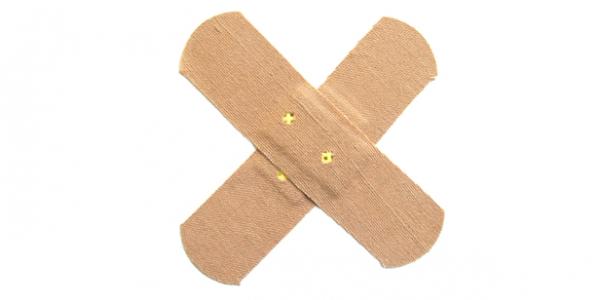
The Truth About Verruca And The Best Way To Treat Them
I am always being asked about Verruca, what it is, what does it look like, how it is caught and of course how it can be avoided.
Verruca are known as Common Wart, appearing on the feet and are also known as Plantar Verruca or Plantar Warts. They are caused by the Human Papiloma Virus, in other words, it’s a viral infection that tends to be more common in young people and children rather than adults.
It is a condition often dreaded by families with young children and one that mums can become paranoid about! Many adults, have recollections of getting Verruca’s in their youth and having to undergo the most painful of treatments, often with little or no success – and now dread that history will repeat itself with their children!
How do we identify a verruca?
A Verruca resembles a lumpy bump on the skin, often surrounded with callus. Lateral pressure will give pain, whereas pressing the Verruca from underneath will rarely give a painful response. Any attempt at removing tissue from it, results in bleeding – this is because they are highly vascular – and this is the best way of recognising whether you are looking at a ‘Corn’ or a Verruca – the vascularity.
I have one patient in her mid thirties now, who says that everyone knew her because of her Verruca, and if she ever walked barefoot at home everyone around her would yelp and rush to put their shoes on quickly, to avoid catching the dreaded thing! This is a scene that you can imagine happens in quite a few households up and down the country and one that is very comical. So are they dangerous? The answer to that question is quite simply ‘no’. Do they hurt? Generally not, however much depends on the site and positioning of the Verruca which can be aggravating, if in a weight bearing position, or pinched by footwear. Are they contagious? Yes.
Verruca love warm moist skin, in fact they thrive in these conditions and are very contagious and easily spread in such environments. One blessing is, that as we get older the skin isn’t quite so warm, or quite so moist and as a result the Verruca are no long attracted to the skin. However, as the defences are down and as we work ever harder with longer hours, it is more difficult to fight a virus that has the upper hand.
There is some evidence that Verruca can regress spontaneously and disappear after any amount of time and therefore, it is often felt that if you leave the Verruca alone it will disappear without the need for any treatment. However, if feet are constantly on show, if there is a big risk that the condition will be passed on and if the Verruca is causing pain, there is a much bigger need for treatment to kill the virus.
What is the best way to treat verruca?
At our Clinic’s we’re increasingly using the holistic approach to treat Verruca. We use Emu Oil and Acupuncture for this. Emu Oil is a natural antiviral and is non-pore clogging and for this reason will penetrate the dermal layers and attack the virus, we are finding that the response and results from Acupuncture treatments are really amazing. We always start the treatment in a traditional manner, and then compliment this with foot Acupuncture and find this can really help to speed up the result.
What about home treatments?
In my view home treatments for warts and verruca is not recommended. Firstly, do not remove the surrounding tissues as the amount of vascular tissue is vast, and the blood will be immense. Removing it yourself can also build up the surrounding scar tissue, which then acts to insulate the Verruca and make it harder to get rid of!
Secondly, in my opinion you really should not be using acid treatments on the feet, this is especially so for younger people/children, and also for someone who has self diagnosed a Verruca. If you suspect you have a Verruca, always get it checked by a professional Podiatrist, as who is to say that you are not looking at something far more sinister? Don’t forget that Plantar Tumours are one of the fastest growing skin cancers and awareness is very important.
The morale of the story…
This is all about professional diagnosis, get a thorough examination and understand and discuss the best treatment for you, with your Podiatrist. Where it is positioned on the foot can have an implication of the best way to treat it with the least pain as well as providing beneficial advice on how to prevent them coming back. There is no blanket rule, and no Common Wart!
DISCLAIMER: The views, opinions and information expressed in this article and on Victoriahealth.com Ltd are those of the author(s) in an editorial context. Victoriahealth.com Ltd cannot be held responsible for any errors or for any consequences arising from the use of the information contained in this editorial or anywhere else on the site. Every effort is made by the editorial and content team to see that no inaccurate or misleading information, opinion or statement appear, nor replace or constitute endorsement from medical bodies or trials unless specified. Victoriahealth.com Ltd accept no liability for the consequences of any inaccurate or misleading data, information, opinion or statement. Information on Victoriahealth.com Ltd and in the editorials is provided for informational purposes only and is not intended as a substitute for the advice provided by your physician or other healthcare professional. You should not use the information on this website or in the editorials for diagnosing or treating a health concern or disease, or for the replacement of prescription medication or other treatment.